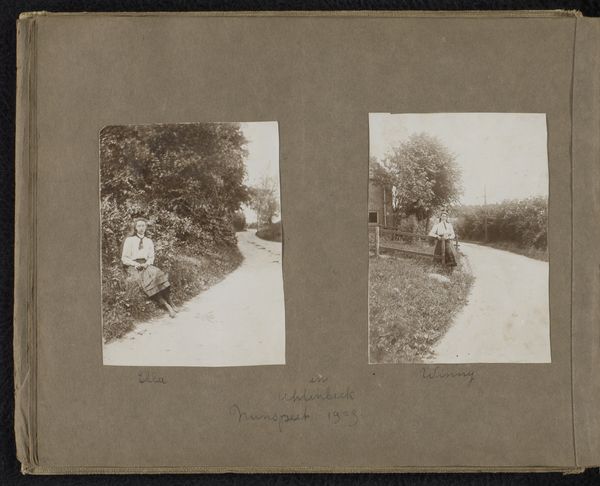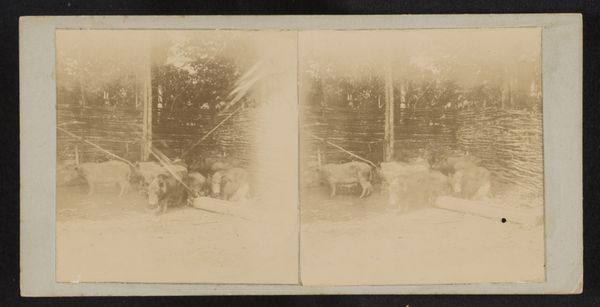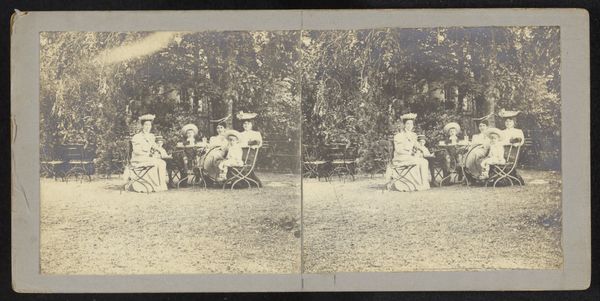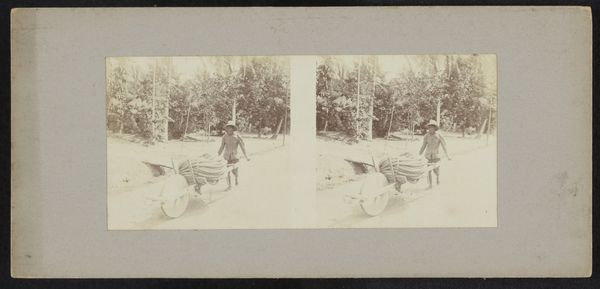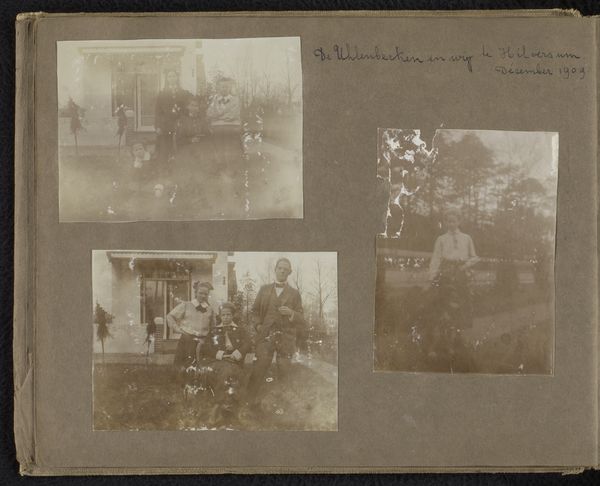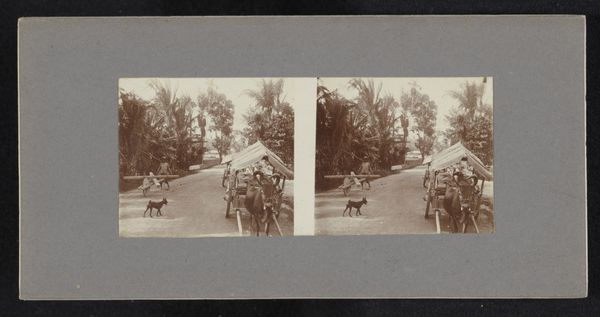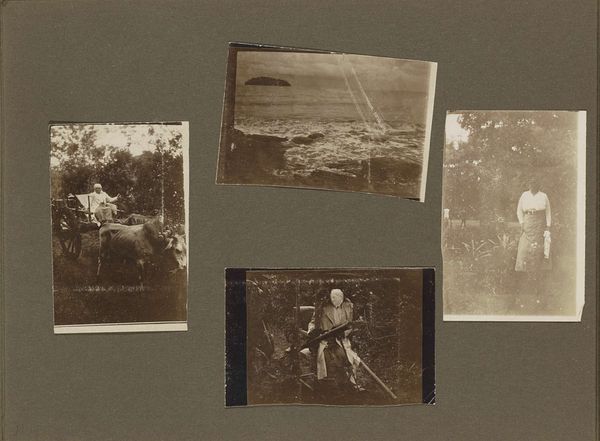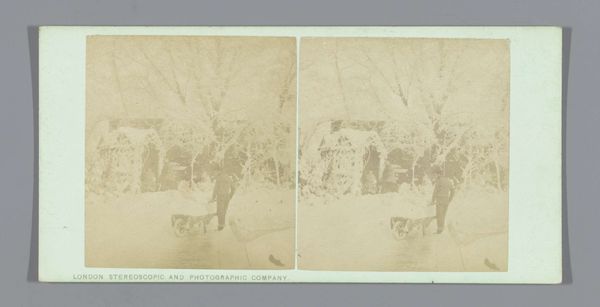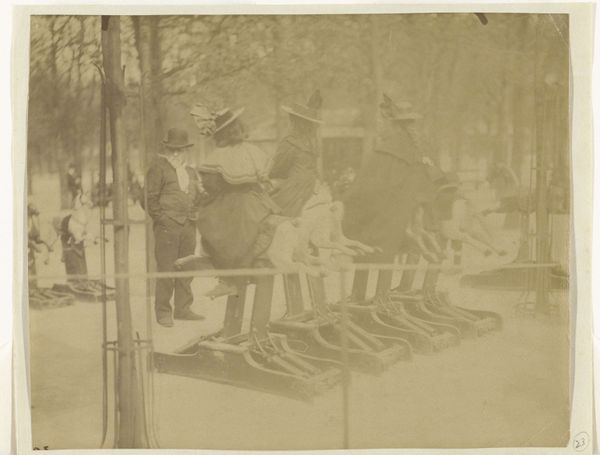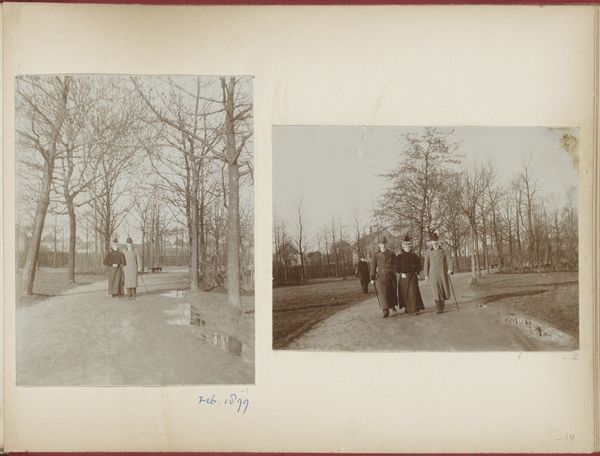
#
natural stone pattern
#
toned paper
#
water colours
#
muted colour palette
#
possibly oil pastel
#
carved into stone
#
stoneware
#
underpainting
#
watercolour bleed
#
watercolor
Dimensions: height 80 mm, width 157 mm
Copyright: Rijks Museum: Open Domain
Editor: This is “In het rijtuig,” or "In the Carriage," from 1903. It’s by Geldolph Adriaan Kessler and held here at the Rijksmuseum. Looking at the washed-out colors, the hazy forms, I almost feel like I’m peering into a memory. What do you see in this piece? Curator: I see a potent image of early 20th-century social stratification and leisure. The carriage itself signifies wealth and status, allowing a privileged view of the world. What kind of stories do you imagine were playing out here in the upperclass during this period? Editor: I suppose there’s a performative aspect to it all, being seen in public, showcasing their affluence. Do you think Kessler was making a commentary on class differences? Curator: Absolutely, whether intentional or not, Kessler's depiction participates in the visual language of class. Art doesn’t exist in a vacuum; galleries and those who are displayed or not within these places are making social and political claims. Editor: That's a really insightful way to frame it! I never considered how the mere act of portraying these individuals could itself be a statement. Curator: And how does this awareness alter your perception? Does the mood change? Editor: It definitely makes me look at it less as a wistful memory and more as a carefully constructed social tableau. I think I'll remember to ask "for whom, and for what purpose" with pieces I'm seeing. Curator: Indeed. By questioning the ‘why’ behind the ‘what,’ we start to uncover the fascinating intersection of art and its public role.
Comments
No comments
Be the first to comment and join the conversation on the ultimate creative platform.

